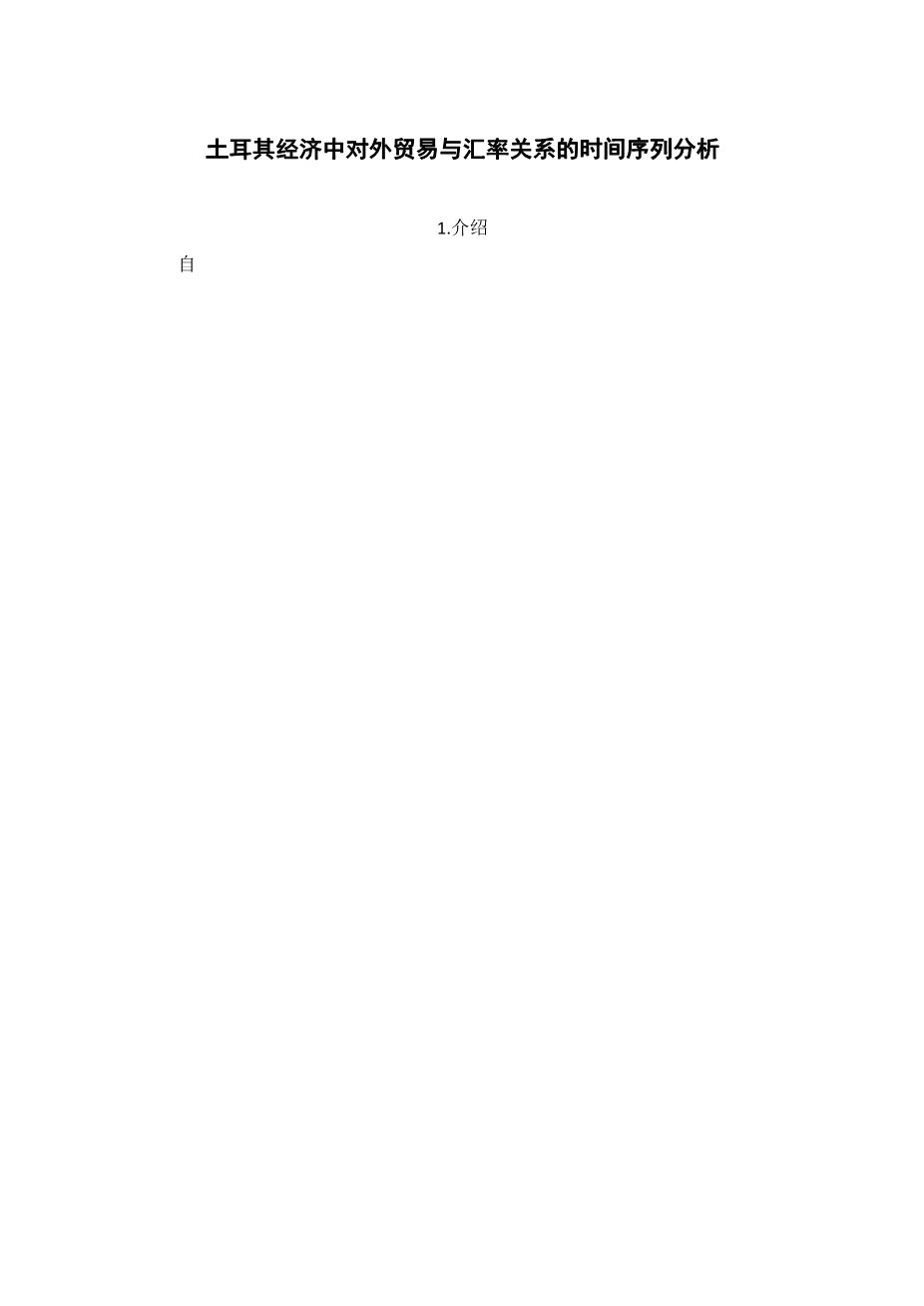1. Introduction
The assumption about that international trade will maintain the economic growth has been ongoing since A. Smith. Therefore, countries try to increase their foreign trade operations by giving attention to their export amounts. However, increases in exports cause to brings about increases in imports and therefore raise the permeability of economic effects through international trade. One of the most important problems of the economies is to have foreign trade developed and deepened without giving rise to foreign trade deficit or at least to maintain this deficit up to a point that it does not interfere with the economic growth and structural development. Therefore, the factors that direct the foreign trade have been constantly researched and in particularly it is observed that there has been a concentration on the effects of the exchange rate. Bickerdike (1920) is the first academician who pointed out to the effects of the exchange rate on the foreign trade. Moreover, Marshall (1923) and Lerner (1944) gave the best-known works about the effects of relative prices. The authors mentioned that the relative prices, which intend to increase the foreign trade, are determined by exchange rates.
Although the foreign trade is known to have positive effects in the economic growth, there are also some studies in the opposite direction. The main reasons of for this are the development level of the countries, trade restriction policies like, quotas and taxes, and the international competitiveness ability together with the differences which are caused by the countries’ original structures. In addition to the studies about that fact that export provides economic growth, there are many studies (Krueger, 1978; Helpman amp; Krugman 1985; Grosman amp; Helpman 1991) which focus on the economic growth supports supporting the export and there is a mutual causality among them. The most important factor which affects export is the exchange rate in consequence of the positive effect of exports in the growth scenario. This effect should be always taken into consideration due to the increase in demand which is caused by the effects of the exchange rate in the international prices of commodities. Furthermore, there were attempts to increase export rates are sometimes tried to be increased by creating devaluation. Narrowing the foreign trade deficit can be achieved through the increase in exports which is caused by an increase in the exchange rate (Lal amp; Lowinger 2002). The expected impacts from exchange rate adjustments or currency movements (Menon, 1994; Melick, 1994) or the devaluation (Himorios, 1989) which is created to increase the exports and to narrow the foreign trade deficit is defined with J-curve in the literature. First of all, according to the curve the export dramatically decreased as the value of national currency is lowered. After a certain period of time period in which the markets adapt to the new exchange rate arrangement, the exports begin to increase and exceed above the level of pre-established arrangement period. So as to receive the expected results from the exchange rate arrangement, a certain period of time period which can differ for each from one economy to another must be experienced. (Rose amp; Yellen, 1989; Backus, Kehoe, amp; Kydland, 1994; Bahmani amp; Ali, 2007; Yusoff, 2007) In today's world in which the international trade has developed and deepened, an agreement about the effects of the exchange rate on foreign trade is not reached because of the differences such as the diversity of the countries' own policies, trade volumes, tradable goods and commodities and the added values of these. Therefore the empirical studies may include differences and reach different conclusions (Lindblad amp; Sellin, 2003). However, one point is almost universally accepted that uncertainties in exchange rates adversely affect the foreign trade (Pozo, 1992; Arize, Malindretos, amp; Kasibhata, 2003; Chowdhury, 1993; Kenen amp; Rodrik, 1986). Some studies in the literature point out that the uncertainty is considered as an opportunity by some companies (McKenzie amp; Brooks, 1997; Dellas amp; Zilberfarb, 1993). At the same time, there are also some studies providing the empirical evidences in the direction of that the exchange rate has no significant effect on the foreign trade (Aristotelous 2001; McKenzie 1999; Gotur, 1985). However, this ineffectiveness generally emerges in the studies which focused on bilateral trade and moreover the bilateral trade is especially made among the countries which can be listed in the developed countries category. For example, Hwaug and Lee (2005) supported the claims in the direction of this ineffectiveness for UK, on the other hand Dash and Narasimhan (2011) mentioned about a full transition from the exchange rate to the export for India as an emerging economy. Therefore, it would be true to say that the most important factor determining the interaction between the exchange rate and the export is the development levels of each country that do undergoes an activity such as trade (Taylor amp; Sarno, 1998). The relative stability in the developed countries reduces the uncertainties. On the other hand risk affects the foreign trade adversely. The exchange rate uncertainties cause the rising costs for the entrepreneurs who avoid the risks (Hooper amp; Kohlhagen 1978). But at the same time, the export provides the new abilities, technologies, experiences and information for the entrepreneurs (Giles amp; Williams, 2000; Porter 1990). Many empirical studies were conducted through these theoric discussions. In this study, the results that were obtained by studies which focused on the selected country and selected country groups are presented basically succintly/ briefly. A study is conducted about the Turkish economy with time series analysis method which is also utilized for many of the studies in this literature. Therefore, a conc
剩余内容已隐藏,支付完成后下载完整资料


英语译文共 7 页,剩余内容已隐藏,支付完成后下载完整资料
资料编号:[469260],资料为PDF文档或Word文档,PDF文档可免费转换为Word
以上是毕业论文外文翻译,课题毕业论文、任务书、文献综述、开题报告、程序设计、图纸设计等资料可联系客服协助查找。


